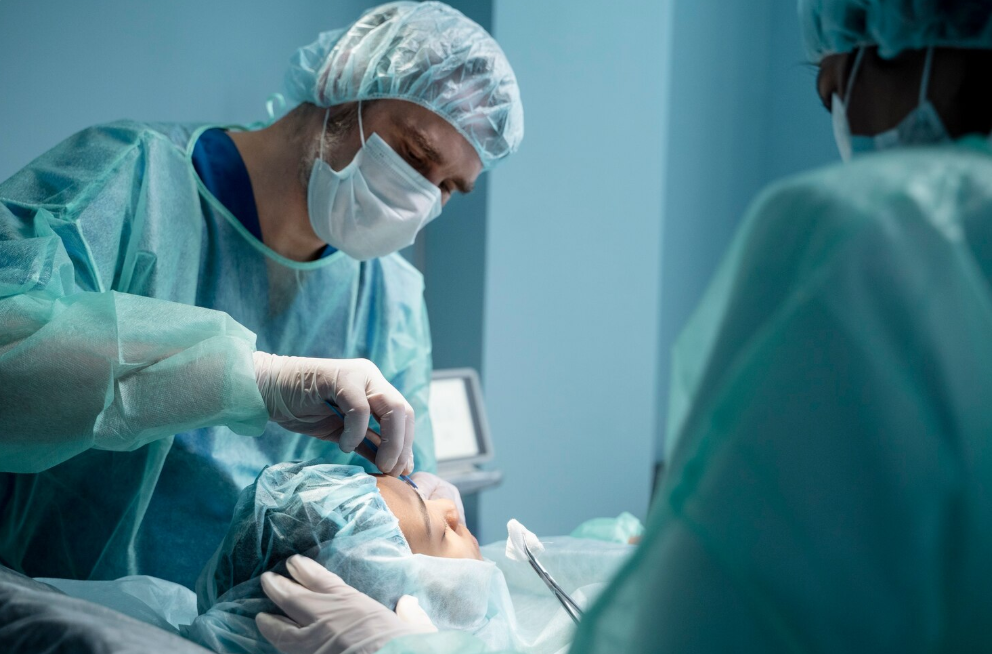Treatment Overview
Secondary ethnic revision rhinoplasty is a corrective nose surgery performed on patients of diverse ethnic backgrounds (such as Asian, Middle Eastern, or African) who have already undergone one or more rhinoplasty procedures but are dissatisfied with the results. These patients often require revision due to issues like loss of ethnic identity, structural collapse, unnatural results, or functional problems.
In Korea, secondary ethnic revision rhinoplasty is highly advanced, combining reconstructive techniques with ethnic-sensitive approaches. Korean surgeons are globally recognized for their ability to restore both natural appearance and nasal function while respecting and enhancing the patient’s unique ethnic features.
Purpose & Benefits
The primary goal of secondary ethnic revision rhinoplasty is to correct prior surgical errors while preserving or restoring the patient’s cultural and ethnic identity. Benefits include:
- Restoring natural nasal proportions in harmony with the patient’s ethnicity.
- Correcting deformities such as collapsed bridges, pinched tips, or asymmetry.
- Reconstructing nasal support with cartilage grafting.
- Improving functional issues, such as nasal obstruction or breathing difficulty.
- Enhancing self-confidence with natural, ethnic-conscious results.
Ideal Candidates
Secondary Ethnic Revision Rhinoplasty in Korea is suitable for individuals who:
- Had a previous rhinoplasty that altered their natural ethnic features too drastically.
- Experience structural or functional problems after primary surgery.
- Have visible deformities such as asymmetry, flatness, or over-reduction.
- Require grafting (septal, ear, or rib cartilage) for reconstruction.
- Seek surgeons experienced in balancing aesthetic refinement with cultural preservation.
Possible Risks & Complications
While generally safe in skilled hands, possible risks include:
- Prolonged swelling due to multiple prior surgeries.
- Graft absorption or warping (rare but possible).
- Scar tissue complications from previous procedures.
- Temporary breathing difficulties during healing.
- Possibility of further revision if severe structural damage exists.
Surgical Techniques Used
Korean surgeons use a combination of reconstructive and ethnic-preserving methods, such as:
- Cartilage Grafting: Using septal (if available), ear, or rib cartilage for support.
- Bridge Augmentation or Reduction: Restoring balance with implants or grafts tailored to ethnic proportions.
- Tip Reconstruction: Rebuilding a pinched or over-reduced tip for a natural ethnic contour.
- Nasal Valve Repair: Improving breathing and airflow if internal collapse exists.
- Scar Tissue Release: Removing or softening scar tissue from prior surgeries.
- Ethnic Preservation: Maintaining cultural harmony by avoiding over-westernized outcomes.
Recovery & Aftercare
- Swelling & Bruising: More prolonged than first-time surgeries; major swelling reduces in 2–4 weeks.
- Splints & Dressings: Worn for 1–2 weeks to protect reconstruction.
- Downtime: Light activities can resume in 10–14 days.
- Final Results: Shape stabilizes gradually, with final results seen at 9–12 months.
- Aftercare in Korea: Clinics offer LED light therapy, scar prevention, lymphatic massage, and personalized swelling care.
Results & Longevity
Secondary ethnic revision rhinoplasty provides long-lasting improvements by reinforcing nasal structure and restoring ethnic balance. Results are designed to last for decades, as Korean surgeons focus on structural integrity, natural aesthetics, and functional restoration.
Treatment Process in Korea
1. Consultation
- Surgeons conduct 3D imaging and morphing to visualize achievable results.
- Detailed discussion of ethnic proportions to ensure preservation of natural features.
2. Pre-Surgery Care
- Nasal functional testing and medical evaluation.
- Donor site preparation (ear or rib cartilage) if additional grafts are required.
3. Surgery
- Performed under general anesthesia.
- Duration: 3–6 hours depending on complexity.
- Techniques vary depending on previous damage and patient goals.
4. Immediate Post-Surgery Care
- Patients monitored in recovery with protective splints applied.
- Pain and swelling management with specialized Korean aftercare protocols.
5. Follow-Up & Aftercare
- Regular follow-ups with swelling control therapies.
- International patients receive packages with interpreters, transfers, and extended aftercare programs.
Why Korea?
- Ethnic Expertise: Korean surgeons specialize in creating results that respect and refine ethnic identity.
- Advanced Reconstruction: Skilled in managing complex revision cases with grafting and structural rebuilding.
- Natural Aesthetics: Avoids artificial or overly westernized results.
- Comprehensive Care: Strong medical tourism support and advanced post-surgery aftercare for global patients.
Cost Range
Secondary Ethnic Revision Rhinoplasty in Korea is complex, often involving grafting and extended surgery time.
- General Price Range: ₩10,000,000 – ₩22,000,000 KRW (approx. $8,000 – $17,500 USD).
- Basic Packages Include: Surgeon’s fee, anesthesia, surgery, and follow-up care.
- Premium Packages May Include:
- Rib cartilage harvesting
- 3D imaging & simulation consultations
- Advanced scar tissue management
- LED/scar care therapy
- VIP recovery suites & concierge medical tourism services
Popular Clinics
- Banobagi Plastic Surgery (Seoul): Known for natural ethnic-preserving revision techniques.
- ID Hospital (Seoul): Large-scale facility with specialized ethnic revision teams.
- JW Plastic Surgery Clinic: Focuses on reconstructive and functional ethnic revisions.
- View Plastic Surgery Clinic: Popular among international patients for aftercare and medical tourism support.
- MINE Plastic Surgery Clinic: Expertise in cartilage grafting and ethnic feature preservation.




